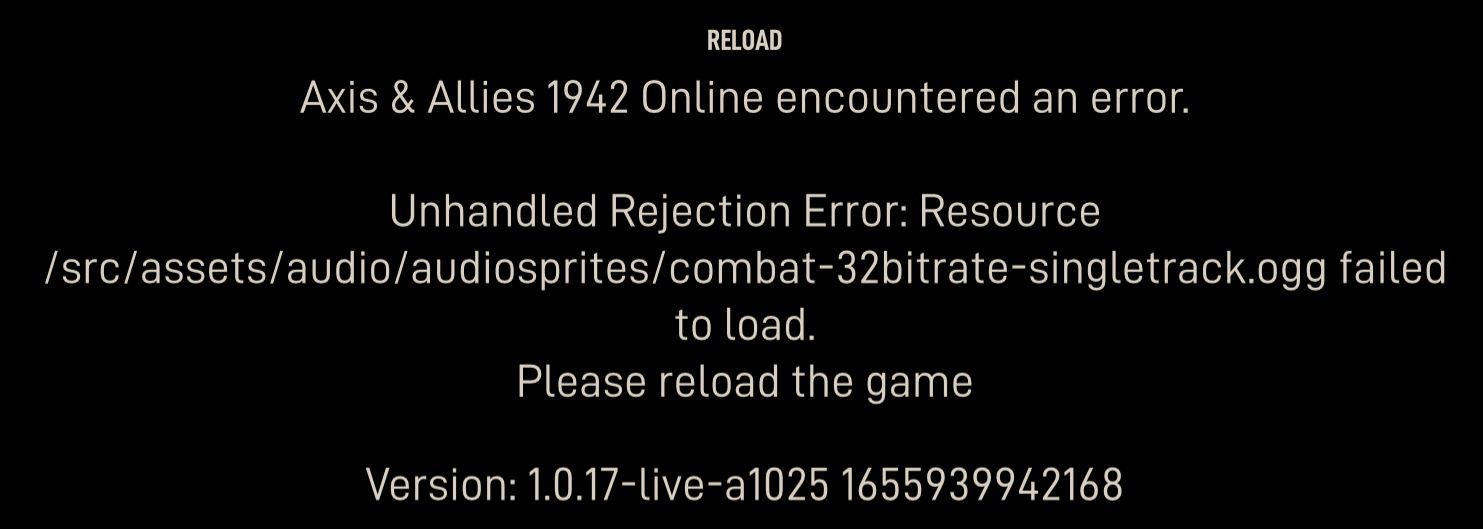@Glasi You need to create a separate Commander Name on Steam and tell me, so that I could merge manually. Probably better send me a DM with all the info (e.g. emails used for both)
[Resolved] Unhandled Rejection Error - iPhone/Mac
-
We want to fix the app, but it will take time.
-
-
Hello, just purchased the game after playing it on a friends house, now it gave me the error right away in my iPhone and iPad, what can I do to fix it pls!

-
Is work still underway on the app? @JuliusBorisovBeamdog
-
Hello,
New here. Made an account for this specific post. I’ve been playing for months and today I got the death loop. Tried everything everyone else has done to no avail.
This is the error I’m getting on my iPhone:

Also, I’m reading about possible Steam Key? I don’t have steam account but would be willing to get it if I can play.
Thanks to whoever reads this.
-
Another issue that needs your attention, thank you.
-
Hi General
Panther has pinged beamdog and he will dial you in. Hope you explore the site. Since you play online you might want to check out triplea https://www.axisandallies.org/forums/topic/17147/gargantua-s-k-i-s-s-triplea-instructions/30
Lots of cool stuff :)Have Fun Gaming
-
@GeneralFig Send me a DM with your Commander Name
-
Thanks! I’ll check it out!
-
I’ll say thanks to you too Panther! Julius was able to help out. And fast too! None of my games lapsed!
-
Hi I also just purchased the game today and am getting the same message. I haven’t been able to create a commander name.
-
I get the same error with rejection drive)
-
@JuliusBorisovBeamdog I got the unhandled rejection error today. iPad 18.5. I’ve been playing on this iPad for years.
What do I do?
-
I’ve noticed an influx of people with this problem over the weekend, for one reason or another.
We’re still working on the issue, it’s getting closer. If you join Discord, you’ll be able to get a special role related to the issue and get notified once we start a test. https://discord.gg/QGBpdjptsT
-
I just purchased this and go the same error on my phone. I see that others have received a steam key and was hoping to get the same. I am also willing to take a refund if that would be easier on your end. Please let me know.
-
So I got the game and this message came up and I’m not sure how to fix it. I am using my phone which is a iPhone 15.
The error-
Unhandled rejection Error: Resource/src/assets/audio/audioprites/combat-32bitrate-singletrack.ogg failed to load.PLEASE HELP
-
@JuliusBorisovBeamdog
I just upgraded my iPhone to 18.5 and now A&A doesn’t work. What is the problem and what is the status of the fix? -
I have expérienced the same problem for the past 10 hours. Let me know how to resolve the issue.
Best -
I see new replies to this thread. Please follow my previous recommendation of joining Discord. If you don’t want to join Discord for some reason, and still would like a Steam key as a workaround, plese send me a DM with your iOS Commander Name.
-
What can I do if my iphone is having this same error but cant use steam as a workaround?







